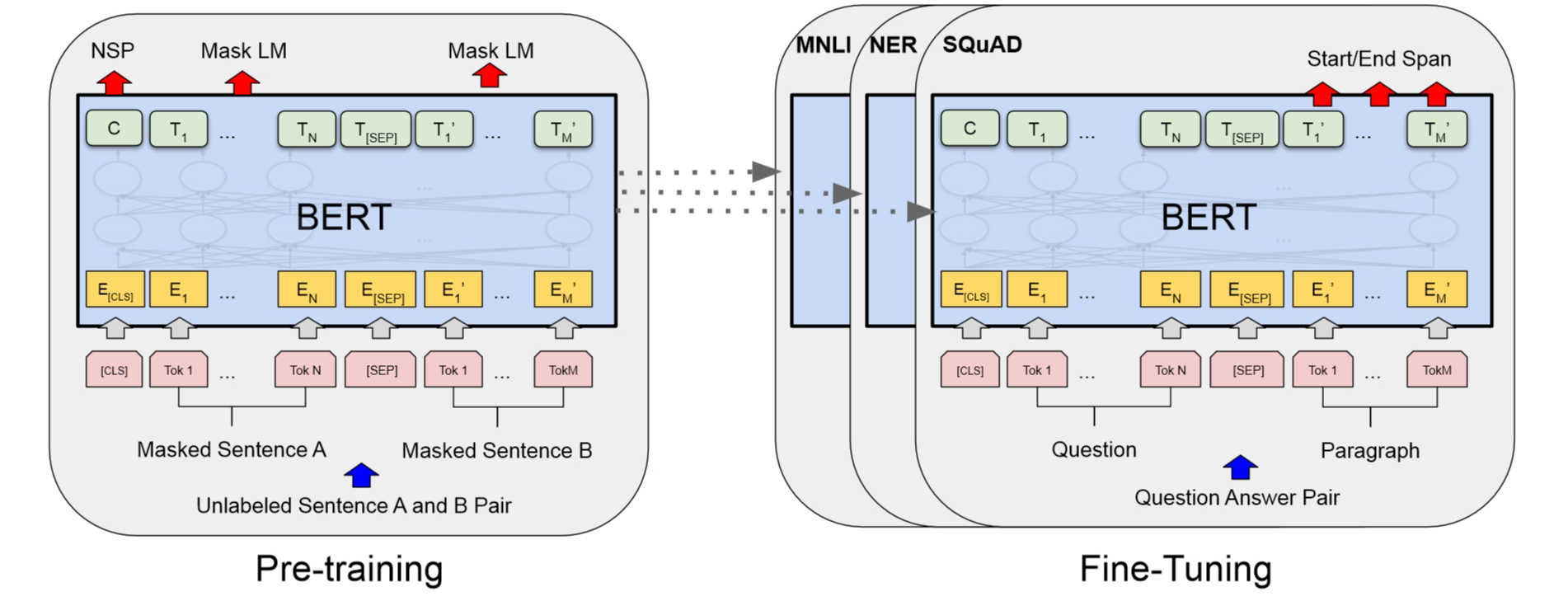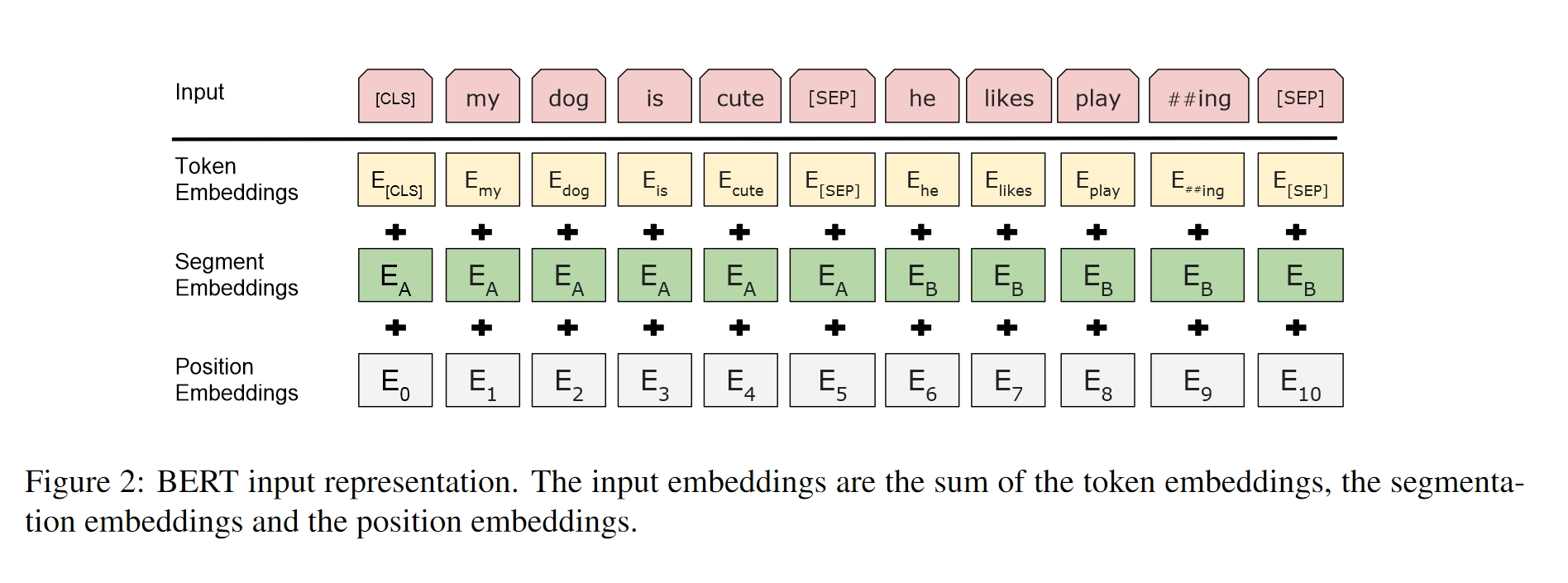BERT
TLDR
Intro
Downstream Task Strategies
feature based
The feature-based approach, such as ELMo (Peters et al., 2018a), uses task-specific architectures that include the pre-trained representations as additional features.
fine-tuning
Generative Pre-trained Transformer (OpenAI GPT) (Radford et al., 2018), introduces minimal task-specific parameters, and is trained on the downstream tasks by simply fine-tuning all pre-trained parameters.
Related Work
Unsupervised Feature-based Approaches
Word -> Sentence -> Context
Unsupervised Fine-tuning Approaches
More recently, sentence or document encoders which produce contextual token representations have been pre-trained from unlabeled text and fine-tuned for a supervised downstream task
BERT
There are two steps in our framework: pre-training and fine-tuning.
For fine-tuning, the BERT model is first initialized with the pre-trained parameters, and all the parameters are fine-tuned using labeled data from the downstream tasks.
In this work, we denote the number of layers (i.e., Transformer blocks) as L, the hidden size as H, and the number of self-attention heads as A. We primarily report results on two model sizes: BERT_BASE (L=12, H=768, A=12, Total Parameters=110M) and BERT_LARGE (L=24, H=1024, A=16, Total Parameters=340M).
Input/Output Representations
To make BERT handle a variety of down-stream tasks, our input representation is able to unambiguously represent both a single sentence and a pair of sentences (e.g., 〈 Question, Answer 〉) in one token sequence.

As shown in Figure 1, we denote input embedding as E, the final hidden vector of the special [CLS] token as
, and the final hidden vector for the ith input token as
3.1 Pre-training BERT
Task #1: Masked LM
In order to train a deep bidirectional representation, we simply mask some percentage of the input tokens at random, and then predict those masked tokens.
Task #2: Next Sentence Prediction (NSP)
